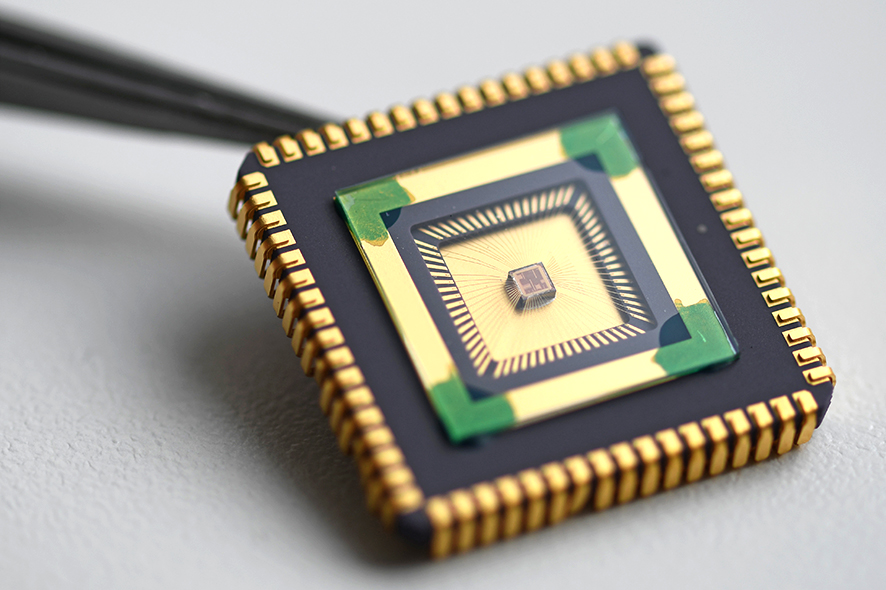The Internet of Things (IoT) is growing constantly. This has already led to the need for a vast number of networked nodes that collect and evaluate data and merge it in a network. The problem is that the energy consumption of networks is also growing apace. Industry and research have so far failed to come up with a sustainable solution to this problem. New IoT hardware is developed for each application, with varying levels of energy efficiency. The Fraunhofer-Gesellschaft hopes to change this: The lighthouse project “Towards Zero Power Electronics” (ZEPOWEL) aims to create a hardware solution that is both holistic and highly energy-efficient. Moreover, a subsequent stage could result in networked sensors that are fully energy self-sufficient.
Approach
Fraunhofer has taken a two-pronged approach to the problem, aiming to significantly reduce the energy consumption of the hardware itself on the one hand, while pursuing energy savings at the network level on the other. To this end, the lighthouse project envisages the creation of new technologies, such as an ultra-low power wake-up RF sensor node that eliminates the need for constant data transmission: The ASIC is only “woken up” when a certain threshold is exceeded or an external request is received. The system is supported by energy harvesting technology to allow unrestricted positioning of the node.
In the course of the project, the EAS division will develop a sensor-analog front end with the ability to measure environmental parameters. It will be implemented in a “Smart City” project demonstrator to enable analysis of urban air quality on the basis of various characteristics. Besides being able to process multi-physical sensor signals, the front-end ASIC will be highly energy-efficient, as well as being flexibly reusable. This is due above all to the EAS-developed “Intelligent IP” used in the ASIC’s development, which allows straightforward reuse of the design data, including for the analog component of the ASIC.
Alongside the sensor front end, the EAS is also developing a power supply circuit board module with a modular energy supply concept. Under this approach, the energy required by mobile and static sensor nodes will be harvested from the environment, for instance via solar power. Low standby currents ensure a high degree of energy utilization, and the nodes will become energy self-sufficient thanks to mechanical harvesters or Wi-Fi.
 Fraunhofer Institute for Integrated Circuits IIS, Division Engineering of Adaptive Systems
Fraunhofer Institute for Integrated Circuits IIS, Division Engineering of Adaptive Systems